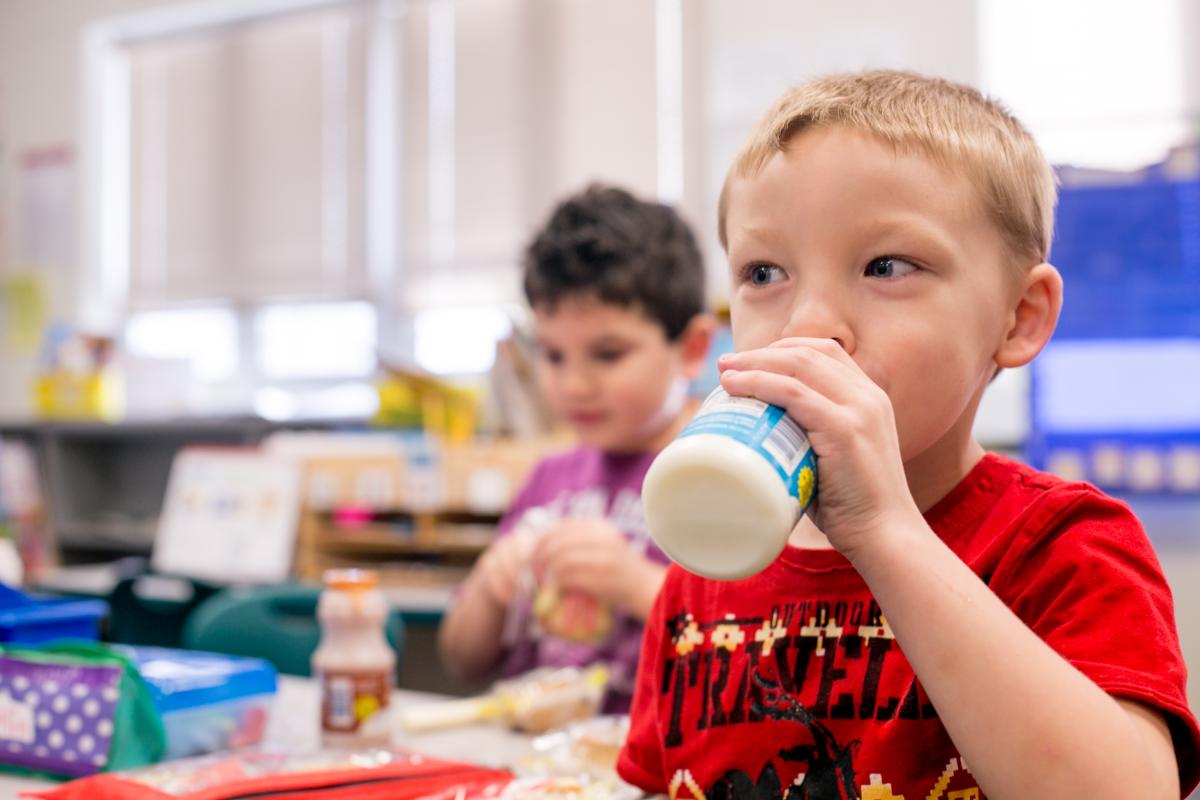Make School Breakfast a Priority
Every school stakeholder hopes students arrive each day with a hunger to learn, not a hunger for food.
Every school stakeholder hopes students arrive each day with a hunger to learn—not a hunger for food.
Communicator
February 2019, Volume 42, Issue 6
Make School Breakfast a Priority

Every school stakeholder hopes students arrive each day with a hunger to learn. However, far too many students miss out on a morning meal, resulting in hunger for food, not knowledge. When schools make breakfast part of the school day, just like lunch, students succeed. Absenteeism and behavior disruptions decline and students’ academic outcomes increase. Principals across the country are working with school nutrition professionals to ensure students in their buildings can easily access breakfast. Here’s how you can make this change, too.
What is the National School Breakfast Program (NSBP)?
The NSBP is a federally funded school nutrition program, just like school lunch. Schools participating in NBSP must adhere to nutrition guidelines supported by science. Even though food items provided to students at school sometimes look the same as breakfast foods found in grocery stores, their nutritional profile is very different.
Children may be determined eligible for free or reduced-price meals through participation in certain Federal Assistance Programs, based on their household income and family size, or by meeting other federal requirements.
Why should students eat school meals?
Research shows that the simple act of eating school breakfast can dramatically change a child’s life. Making school breakfast a seamless part of the school day by serving it after the bell can also have a huge impact on classrooms. From higher test scores and calmer classrooms to better attendance and graduation rates, school meals have proven to have a huge effect on students’ abilities to learn. The health benefits are also clear, with fewer nurse visits, better health, and lower rates of obesity among children who have access to school breakfast.

Why aren’t more students participating?
Traditional school breakfast programs often operate too early for students to participate, particularly if bus or carpool schedules do not allow them to get there on time. Other students end up skipping breakfast because they do not want to be singled out as poor or lose out on time socializing with their friends. Breakfast-after-the-bell models can be an easy way to overcome these barriers.
What do breakfast-after-the-bell models look like?
There are many ways to create a successful school breakfast program, but three innovative models that have been especially successful are Breakfast In the Classroom, Grab and Go, and Second Chance.
Breakfast in the Classroom. Students eat breakfast in their classroom after the official start of the school day. Students or staff deliver breakfast to classrooms via coolers or insulated rolling bags, or get breakfast from mobile carts in the hallways. As students eat, teachers begin instruction.
Grab and Go. Students pick up conveniently packaged breakfast from mobile service carts in high traffic areas, such as hallways, entryways or cafeterias. Students eat in the classroom or elsewhere on school grounds before and after the bell has rung. Grab and Go is most effective when carts are stationed in locations convenient to students (e.g. near school entrances) and when students are able to eat the food they pick up from the carts in the classroom.
Second Chance Breakfast. Students eat breakfast during a break in the morning, often after first period or between breakfast and lunch. Schools serve breakfast in the same manner as they would with traditional Grab and Go breakfast.

How can I help students access school breakfast?
- Talk to cafeteria and nutrition staff. Ask them how your school is serving breakfast and whether there are other models your schools could try.
- Raise concerns with your school staff. Talk to your staff about the importance of school breakfast and any barriers you see to students accessing the meal and brainstorm ways to troubleshoot.
- Find a volunteer to start a pilot in their classroom. With the support of your cafeteria, custodial, and other education staff, ask for a volunteer to start a breakfast-after-the-bell pilot in their classroom. A truncated pilot can help work out kinks and show the success of alternative models in real time.
- Reach out to No Kid Hungry. Team No Kid Hungry works with school administrators and staff to help them identify and customize the model that works best for their school. We help bring together school stakeholders, including teachers, food and building services staff, and parents, to design the ideal program and make sure that schools have the funding, equipment and marketing resources they need in order to make these alternative breakfast models work.
Looking for more information on school breakfast for your students? Check out this webinar, Hungry to Learn: An Equitable Start to the Day With Access to School Breakfast, we cohosted with No Kid Hungry.
—
Copyright © 2019. National Association of Elementary School Principals. No part of the articles in NAESP magazines, newsletters, or website may be reproduced in any medium without the permission of the National Association of Elementary School Principals. For more information, view NAESP’s reprint policy.

